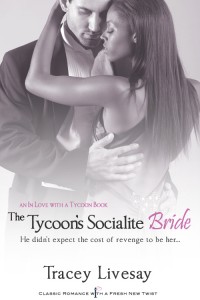
I read my first romance novel at the age of eleven and I was instantly addicted. I read on the bus to and from school. I hid the novels in my textbooks and read during lectures. I sometimes skipped lunch and read in  the library. And on the third Sunday of each month, when I ushered in church and could sit away from my family, I hid a book in my hymnal and read during the sermon.
the library. And on the third Sunday of each month, when I ushered in church and could sit away from my family, I hid a book in my hymnal and read during the sermon.
I consumed them, unable to get enough. But when the newness of my discovery wore off, I started to notice a common theme. Book after book contained some variation of the hero waxing poetic about the heroine’s fine, delicate features, her flowing mane the color of wheat fields, and her smooth peaches and cream or pale ivory complexion.
Where did that leave me? I wanted to be seen as beautiful, as worthy of a happily ever after. Where were the books where men were entranced by the cocoa color of my skin? Where they loved the tight coils in my hair and the fullness of my lips? Every once in a while, I’d luck up and find such a romance novel, but it was far too infrequent. Why weren’t there more and why were romance publishers reluctant to feature love stories involving heroines of color?
The refrain has been that books with people of color on the cover wouldn’t sell. The suggestion is insulting to us all. It says that women of color are so meaningless that no one would be interested in reading about them and their journey to find love. And it says white women are so narrow-minded, they couldn’t enjoy a story featuring a heroine of color, even though women of color have been doing the reverse for years.
No one reaches her mid-twenties with zero background. We’ve all been through experiences that affect our search for love and attaining our HEAs. And those experiences are similar, whether your heroine is black, white, Asian or Hispanic: issues with trust, family dynamics, balancing life and career. We’ve all dealt with some form of these problems. Reading stories where heroines of color navigate these same choppy waters proves we’re more alike than not.
As my life progressed, I read less, but I never lost my love for the genre. I met and married my husband, who is white. We settled into our life, bought a house and started a family. I left my job as a Public Defender to stay home with our children. And because I’d experienced my own happily ever after, I yearned for stories that would mirror the path I’d taken. When I saw the scarcity, I decided to write my own.
I didn’t come to this decision lightly. Society was changing. The market for interracial romance, featuring women of color was growing. In fact, members of Gen Y and younger looked at race with a more inclusive attitude. A July 2013 Gallup poll found that 87 percent of Americans approved of interracial marriage — the highest rate ever.
Yet for an industry that prides itself on empowering women by giving them a voice and telling their stories, the major imprints have been slow to capitalize on this trend. Even TV is making inroads. Scandal, Sleepy Hollow, Parenthood, Vampire Diaries, all popular shows featuring smart, strong, sexy black women in relationships with white men. That’s not counting shows like The Mindy Project, Modern Family, Grey’s Anatomy and Chicago Fire, where the interracial couplings aren’t black and white. These shows aren’t telling stories containing the usual stereotypes. In most cases, race isn’t even an issue. Plus, these shows couldn’t be as successful as they are if only women of color were watching them. They’re popular because they’re resonating with everyone. In the same way, interracial romances aren’t just for women of color but for anyone who enjoys a good love story. If current thinking is correct and our competition isn’t other books, but other media, we may be losing readers to TV, which has a product we’ve been reluctant to provide.
Between the 2000 and 2010 censuses, the number of interracial marriages in the US increased by 28% and that number doesn’t include couples who only date or live together. If we assume the same level of growth in the next decade, this means more and more women will be looking to read stories that reflect their journeys to happily ever after. This isn’t a superficial need.
It’s a basic one.
Read More About The Tycoon’s Socialite Bride

Awesome post, Tracey!
LOVE this post Tracey! Everytime Entangled’s imprints ask what they need more of in their books I beg for more POC characters. Growing up I had no idea that I was “white”, as far as I was concerned there was only one race—the human race. There were people of all colors and nationalities in my community and I want a better representation of that in my fiction too. :)
And thanks for listening Entangled, I’m noticing them as they come and it makes me proud to keep working with you! ♥